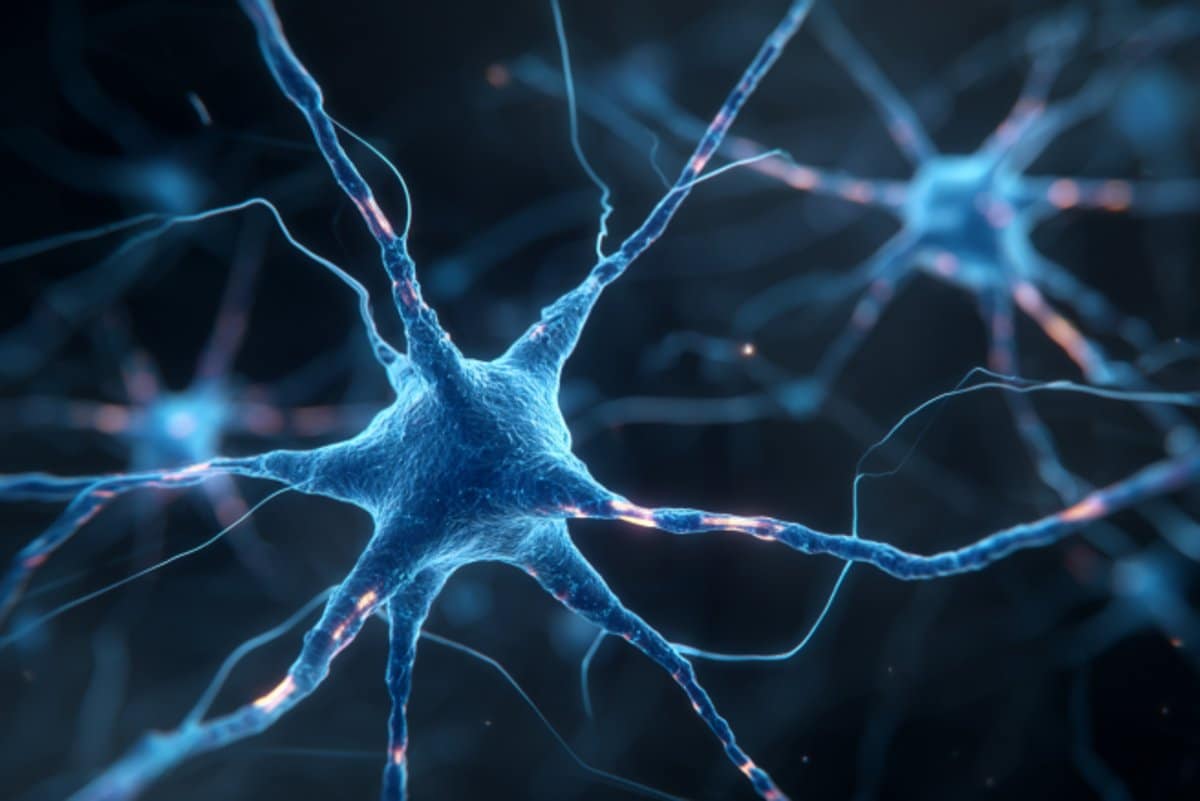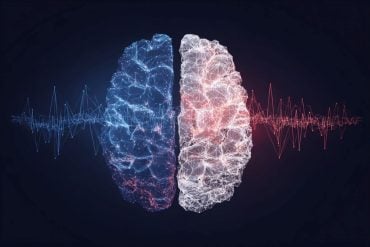Summary: Scientists have uncovered a key role for the protein “Frazzled” in building and maintaining the rapid neural connections that allow fruit flies to react in milliseconds. When Frazzled is missing, neurons lose vital gap junctions, slowing communication and weakening muscle responses.
Reintroducing part of the protein restored proper wiring and signal speed, showing that Frazzled’s control of gene activity is essential for healthy neural communication. The findings reveal how one molecule can shape both the structure and function of neural networks, offering insights relevant to brain development and repair across species.
Key Facts
- Neural Wiring Control: The protein Frazzled regulates how neurons form fast, reliable electrical connections.
- Signal Speed: Loss of Frazzled disrupts gap junctions, slowing brain-to-muscle communication.
- Conserved Mechanism: Similar proteins may play the same role in mammals, linking findings to broader brain function and repair.
Source: FAU
Florida Atlantic University neuroscientists have uncovered a surprising role for a protein named “Frazzled” (known as DCC in mammals) in the nervous system of fruit flies, showing how it helps neurons connect and communicate with lightning speed.
The discovery sheds light on the fundamental mechanisms that ensure neurons form reliable connections, or synapses, a process essential for all nervous systems, from insects to humans.

In the study, researchers focused on the Giant Fiber (GF) System of Drosophila, a neural circuit that controls this fruit fly’s rapid escape reflex. With this work, the team has not only revealed a key molecular player in fruit fly neural circuits but also demonstrated the power of combining genetics, imaging, physiology and computational modeling to uncover how brains stay wired – and what happens when they don’t.
The results, published in the journal eNeuro, reveal that when Frazzled is missing or mutated, the system falters: neurons fail to form proper electrical connections, the fly’s neural responses slow down, and communication between the GF neurons and the muscles they control weakens.
These defects are linked to a loss of gap junctions, tiny channels that allow neurons to transmit signals directly and rapidly. In particular, the team found that the loss of a protein called shaking-B(neural+16), which forms these junctions in the presynaptic terminals, underlies much of the misfiring.
To understand Frazzled’s precise role, the researchers used a genetic tool known as the UAS-GAL4 system to reintroduce different pieces of the Frazzled protein into mutant flies. Strikingly, just the intracellular portion of Frazzled – the part inside the neuron that can influence gene expression – was enough to restore both the structure of the synapses and the speed of neuronal communication.
When this portion was disrupted, such as by deleting a key domain called P3 or mutating a crucial site within it, the rescue failed, indicating that Frazzled’s control of gene activity is essential for building gap junctions.
Beyond laboratory experiments, the team also created a computational model of the GF System, simulating how the number of gap junctions affects the neurons’ ability to fire reliably. The model confirmed that even small changes in gap junction density can drastically alter the speed and precision of neural signals.
“The combination of experimental and computational work allowed us to see not just that Frazzled matters, but exactly how it shapes the connections that let neurons talk to each other,” said Rodney Murphey, Ph.D., senior author and a professor of biological sciences in the FAU Charles E. Schmidt College of Science.
“Our next steps are to explore whether similar mechanisms control neural circuits in other species, including mammals, and to see how this might influence learning, memory or even repair after injury.”
Interestingly, while Frazzled has long been studied as a guidance molecule – helping neurons grow along the correct paths – the study revealed that its intracellular domain also directly regulates synapse formation.
Flies lacking Frazzled often showed neurons that grew in random directions, failing to reach their targets. Restoring the intracellular domain corrected many of these guidance errors, demonstrating a dual role for Frazzled in both wiring neurons and fine-tuning their communication.
This work also draws parallels to other organisms. Similar proteins in worms and vertebrates have been shown to influence chemical synapses, suggesting that Frazzled and its relatives may play a broadly conserved role in shaping neural networks.
By showing how a single protein controls both the physical and functional aspects of electrical synapses, this study opens a window into the fundamental rules governing nervous system assembly.
“Understanding how neurons form reliable connections is a central question in neuroscience,” Murphey said.
“Frazzled gives us a clear handle on one piece of that puzzle. Our findings could inform future studies of neural development, neurodegenerative diseases and strategies to repair damaged circuits.”
Study co-authors are first author Juan Lopez, Ph.D., a postdoctoral researcher in the Charles E. Schmidt College of Science; Jana Boerner, Ph.D., managing director of the Advanced Cell Imaging Core within the FAU Stiles-Nicholson Brain Institute; Kelli Robbins, research staff in FAU’s Department of Biological Sciences; and Rodrigo Pena, Ph.D., an assistant professor of biological sciences in the Charles E. Schmidt College of Science.
Key Questions Answered:
A: It helps neurons form electrical connections (gap junctions) that enable fast and precise communication.
A: Neural signals slow, connections weaken, and neurons may misfire or fail to reach their targets.
A: It reveals a molecular mechanism that ensures rapid information flow in the nervous system, informing future studies on brain development and recovery.
About this genetics and neuroscience research news
Author: Gisele Galoustian
Source: FAU
Contact: Gisele Galoustian – FAU
Image: The image is credited to Neuroscience News
Original Research: Closed access.
“Frazzled/DCC Regulates Gap Junction Formation at a Drosophila Giant Synapse” by Rodney Murphey, et al. eNeuro
Abstract
Frazzled/DCC Regulates Gap Junction Formation at a Drosophila Giant Synapse
Loss-of-function (LOF) Frazzled/DCC mutants disrupt synaptogenesis in the Giant Fiber (GF) System of Drosophila.
We observed weaker physiology in LOF male and female specimens, characterized by longer latencies and reduced response frequencies between the GFs and the motor neurons.
These physiological phenotypes are linked to a loss of gap junctions in the GFs, specifically the loss of the shaking-B(neural+16) isoform of innexin in the presynaptic terminal. We present evidence of Frazzled’s role in gap junction regulation by utilizing the UAS-GAL4 system in Drosophila to rescue mutant phenotypes.
Expression of various UAS-Frazzled constructs in a Frazzled LOF background was used to dissect the role of different parts of the Frazzled receptor in the assembly of electrical synapses. Expressing Frazzled’s intracellular domain in Frazzled LOF mutants rescued axon pathfinding and synaptogenesis.
This is supported by the complementary result that Frazzled fails to rescue synaptic function when the transcriptional activation domain is disrupted, as shown by the deletion of the highly conserved intracellular P3 domain or by a construct with a point mutation in the highly conserved P3 domain known to be required for transcriptional activation.
A computational model clarifies the role of gap junctions and the function of the GF System.
The present work shows how various domains of a guidance molecule regulate synaptogenesis through the regulation of synaptic components.






